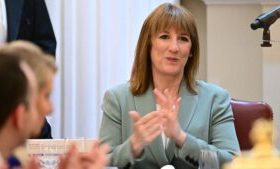
Wage growth across the UK picked up slightly in the three months to February, defying a weakening labour market and providing a fresh challenge for the Bank of England as it weighs when to start cutting interest rates.
New figures from the Office for National Statistics (ONS) show that average weekly earnings, excluding bonuses, rose by 5.9 per cent year-on-year in the December to February period—up from 5.8 per cent in the previous month. When bonuses are included, the rate held steady at 5.6 per cent. Both figures were broadly in line with economists’ expectations.
The unemployment rate remained unchanged at 4.4 per cent, but underlying labour market data points to growing slack. The number of job vacancies dropped by a further 22,000—marking a continued downward trend—and fell below pre-pandemic levels for the first time since 2021.
Meanwhile, a flash estimate for March suggests the number of payrolled employees declined by 78,000, a sharper drop than the 35,000 anticipated by analysts. It highlights mounting pressure on hiring as businesses adapt to a slowing economy and persistently high interest rates.
Despite this, pay growth remains robust by historical standards and is still well above the 2 to 3 per cent range typically consistent with the Bank of England’s 2 per cent inflation target. February’s data, however, does not yet account for recent policy changes—including the increase in employer national insurance contributions and the uplift in the national living wage, both introduced in April.
Economists have warned that these changes are likely to dampen hiring in lower-wage industries such as retail, hospitality and social care, sectors that are already feeling the pinch from tighter margins and ongoing cost pressures.
Liz McKeown, director of economic statistics at the ONS, noted: “Regular pay growth remains strong, having increased slightly in the latest period. Growth accelerated in the public sector as previous pay awards fed through to the data, while private sector pay was largely stable.”
While February brought some unexpected good news for GDP—monthly growth hit 0.5 per cent, driven by stronger-than-anticipated performance in manufacturing and industrial output—the outlook remains uncertain.
Concerns are mounting over the impact of new US tariffs and a more protectionist global trading environment. These factors, economists say, could drag on exports and business confidence, adding to downward pressure on growth throughout 2025.
Markets currently expect the Bank of England to implement up to three interest rate cuts by the end of the year, potentially taking the base rate down to 3.75 per cent. But with wage growth still running hot, policymakers are likely to proceed with caution.
Yael Selfin, chief economist at KPMG UK, said: “With pay growth still above the levels compatible with the inflation target, the Bank will likely maintain a cautious approach to rate cuts. That said, mounting risks to domestic demand and labour market participation may tip the balance.”
Ashley Webb, UK economist at Capital Economics, added that while the labour market continues to lose steam, there is little sign yet that this is feeding through into weaker pay growth. “However, if global trade disruption begins to bite, it could force employers to rethink hiring plans and slow wage settlements in the months ahead,” he noted.
Read more:
UK wage growth stays strong despite softening labour market and looming tax pressures








